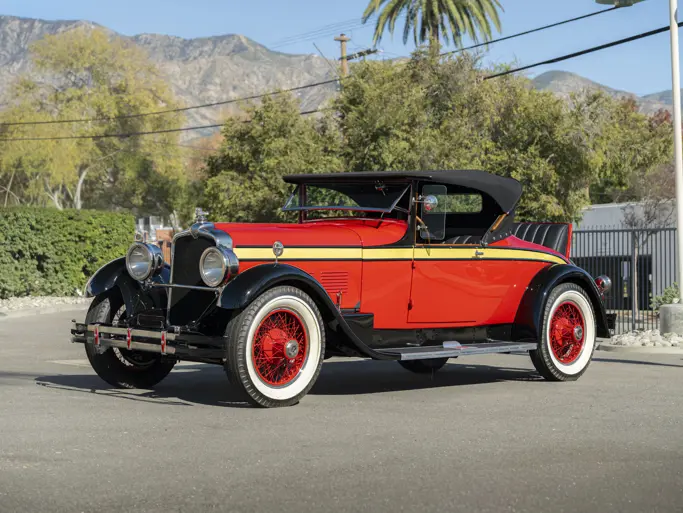Model 1405. 150 bhp, 384.4 cu. in. L-head eight, three-speed manual selective synchromesh transmission, semi-elliptic leaf spring suspension front and rear, four-wheel mechanical brakes. Wheelbase: 144"
- One of only two known to exist
- Ordered new for the White House garage
- Likely used in FDR inaugural parade
- Proceeds to benefit Packard Proving Grounds
For 1936 the Super 8 series encompassed the 1403, 1404 and 1405 with wheelbases ranging from just 132 inches on the 1403 to an impressive 144 inches on the 1405, which was the same as that used for the Twelve. The Super 8 was given the new sloped grille with chrome vertical bars that were actually thermostatically controlled shutters, which would remain closed while the engine was warming up and open automatically for proper ventilation. The fender styling was altered slightly as were the hood vents and headlamp trim.
Packard maintained a close relationship with Dietrich, Inc. and for good reason; the Dietrich designs were important sources of fresh ideas and concepts for Packard’s own coachwork, and the association with Dietrich and its founder enhanced the appeal of the Packard. Ray Dietrich was a designer at Brewster and was unexpectedly fired along with another colleague, Tom Hibbard, when the management learned of the pair’s plans to set up their own shop. Not wanting to remain out on the street, they set up shop in New York City and opened LeBaron Carrossiers. Although the firm was on the rise, Hibbard left in 1923 to pair up with a designer he met in Paris by the name of Howard Darrin, and Dietrich later moved to Detroit to form a subsidiary of Murray. There was an immediate financial falling out over the use of seed money provided by Edsel Ford, and in September 1930 Dietrich was forced out of his namesake firm over a disagreement as to what action should be taken to survive the Depression. Although Ray Dietrich was gone, his talent was manifest in the many custom and semi-custom bodies that continued to bear his name and grace Packards for years to come.
This 1936 Packard Super 8 Dietrich Seven-Passenger Phaeton is one of only three such cars built and only two known to survive. It was ordered new for the White House garage, and according to the owner, it served as a parade car in Franklin D. Roosevelt’s second inaugural parade in 1937 and is reported to have carried two cabinet members. Given its open coachwork, it stands to reason that it would have seen additional parade use in the President’s motorcade.
This rare phaeton also competed in the 1986 Great American Race while in the stewardship of Mr. Tom Monaghan of Domino’s Pizza fame, a noted car collector in his own right. It was later acquired by CCCA Metropolitan Region Founding Member Major Frank Stuhlman, a decorated war hero. Major Stuhlman was a marine fighter pilot who successfully completed 44 combat missions and tallied five kills while flying torpedo bombers as a pilot in the South Pacific. He also test-piloted the Grumman Tiger Cat and served his country again during the Korean War, flying Corsair fighters and jet fighters, and eventually retired as a full colonel in 1977. As a result of his service, Major Stuhlman also has the distinction of having been decorated by Admiral Halsey with the Distinguished Flying Cross.
The Packard has been very well looked after over the years and attended to when needed with work performed on the black paint, chrome and interior. It displays excellent lines resulting from the phaeton body on the long wheelbase. It is further equipped with wind wings, dual side-mounted spares with full metal covers and mirrors, spot light, true wire wheels with chrome disc covers, wide whitewall tires and a trunk rack.
The Packard Motor Car Company itself served the United States with distinction. The Liberty V-12 airplane engine was designed by Colonel Jesse Vincent and was used widely in the air corps during World War I. When called on again for the next great war, the firm supplied engines for boats and airplanes, most notably the Merlin V-12 produced under license from Rolls-Royce. As a result of its history in the White House fleet and later ownership by a decorated fighter pilot, this Packard Super 8 is an ideal car to serve America once again by raising funds for the historic Packard Proving Grounds.
The first $100,000 of proceeds, including RM’s commission, will be donated to the Packard Motor Car Foundation as the final tranche of funding for the last parcel of Packard Proving Grounds land to be acquired by the foundation for future use in the recreation and celebration of the history of the Packard Motor Car Company. For a complete overview of this worthy project, please review the sidebar.
THE PACKARD PROVING GROUNDS
The Packard Proving Grounds site was constructed in 1927 with beautiful Tudor-style buildings, grand entrance gates, an elm-lined parkway and a test track complete with various complications to test new Packard automobiles to their limits. The entire site was designed by famed architect Albert Kahn, who was responsible for many of Detroit’s most important structures, and was the place where Colonel Jesse Vincent tested his legendary creations including the 734 Speedsters. His brother Charles was responsible for lapping the track in every new Twelve to break them in and provide a testing certification.
During World War II the site was leased to Chrysler Defense for the purpose of testing tanks and other military vehicles. In 1955 the site was sold to Curtiss-Wright to make use of its airstrip. The site was used throughout the years for various purposes, and the subsequent owners had proven to be an excellent steward, saving all of the historic structures on the property.
By the late 1990s, it was decided that the site was to be razed and developed, leaving the Proving Grounds a memory. Historians, collectors and enthusiasts from the community and around the country quickly mobilized. By 2002, an agreement had been struck that gave control of the site to the Packard Motor Car Foundation. The site is now on the National Register of Historic Places, and painstaking restoration of the buildings and grounds has been ongoing to return the site to its original glory. The rows of elm trees have been replanted, water and sewer service was restored, and buildings preserved include the repair garage, engineering building, water tower, Lindbergh aircraft hangar and timing stand. A key component of the finished project will be a museum display celebrating the wartime contributions of all the carmakers, called the “Arsenal of Democracy.”
The Packard Proving Grounds would have never been saved and restored without continuing leadership from the members of the Foundation’s Board of Trustees and ongoing support from legions of local and national historians and enthusiasts who have donated time and funds to this initiative.

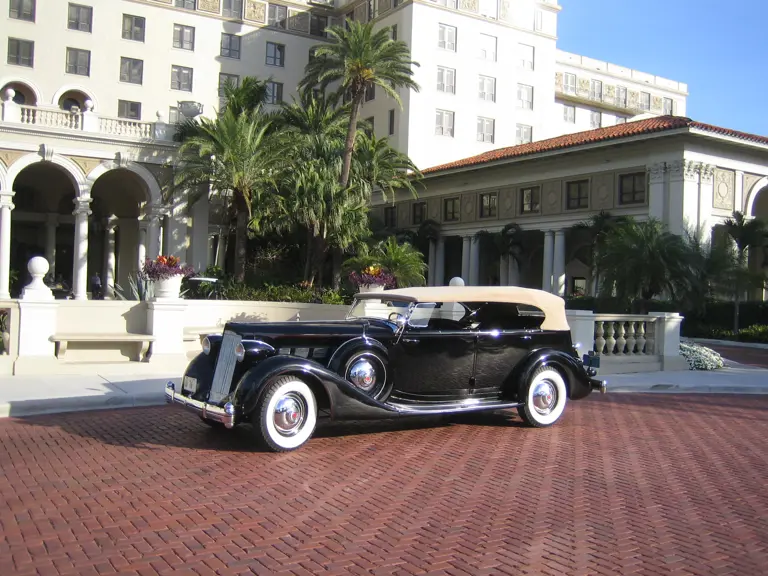
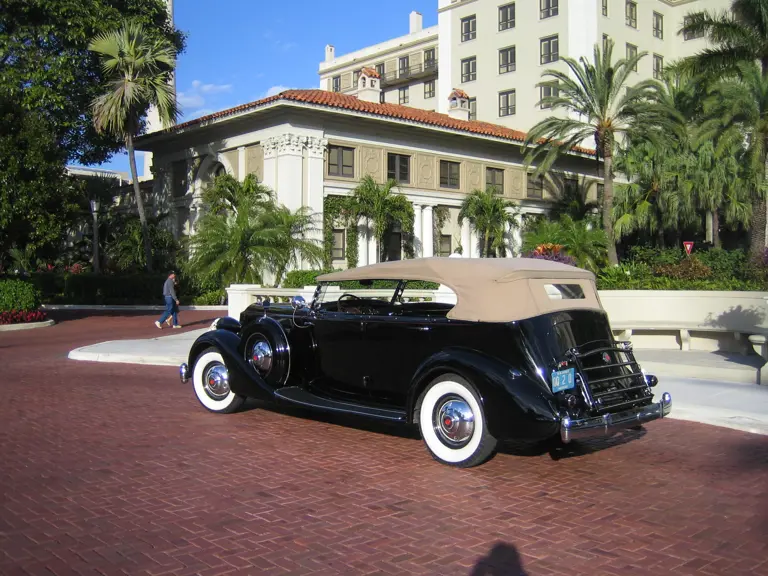
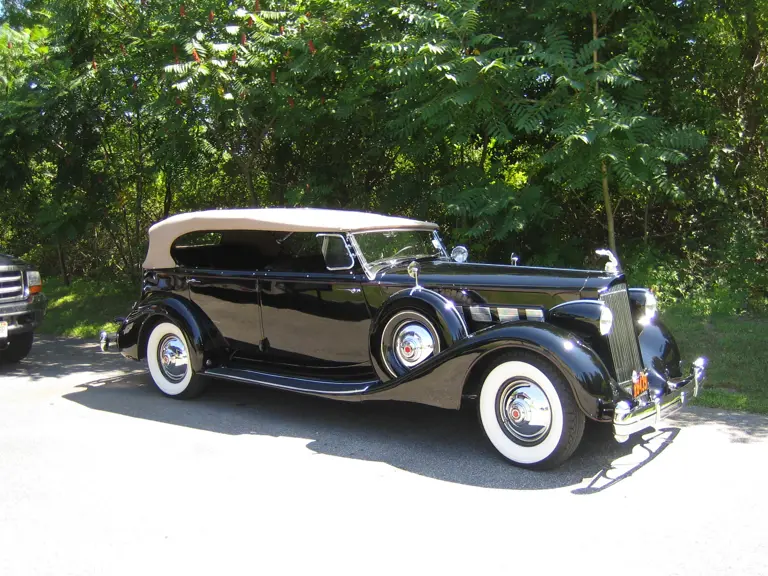
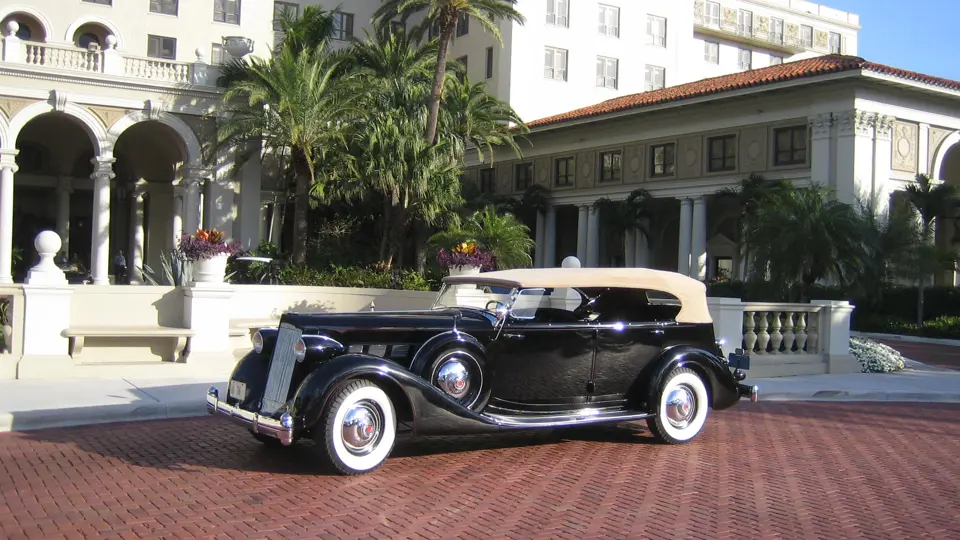
 | Hershey, Pennsylvania
| Hershey, Pennsylvania

